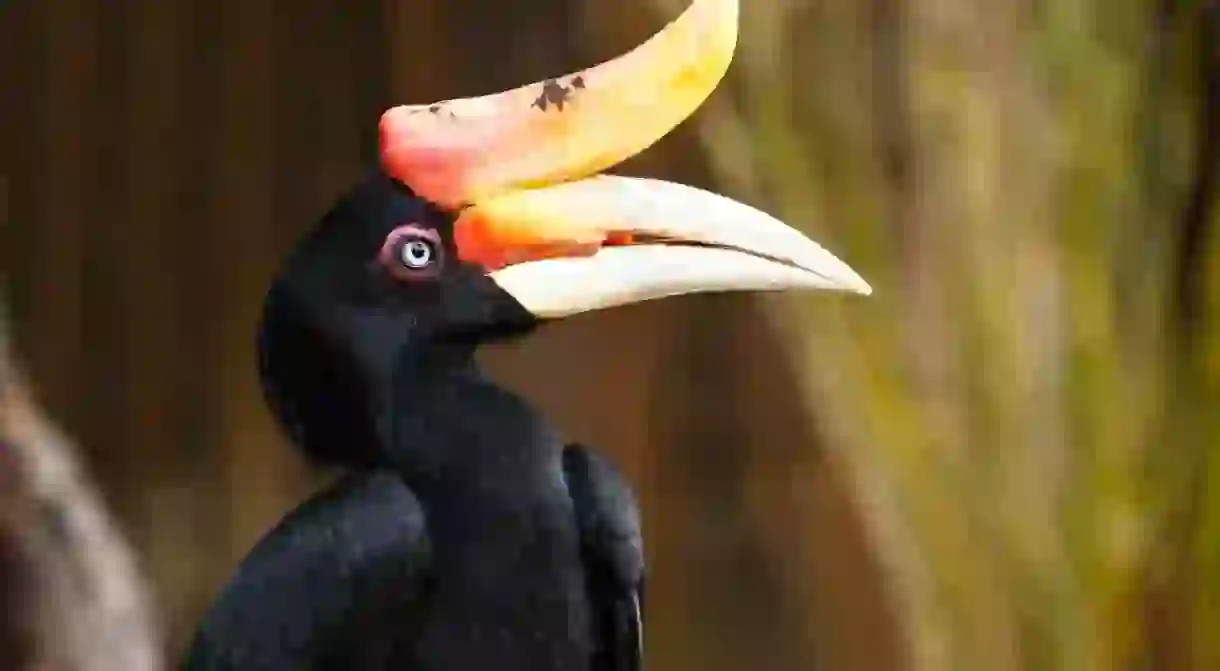Sarawak: The Land of the Hornbills

Sarawak, Malaysia’s largest state on Borneo Island, is nicknamed the ‘Land of the Hornbills’. With eight out of the world’s 54 species, the bird features as the state symbol. Keep reading and discover why hornbills, in particular the Rhinoceros Hornbill, has deep cultural links to Sarawak and its indigenous people.
Graceful creatures
Hornbills are unusual. The giant birds, which can grow larger than one metre (3.3 feet) and weigh several kilograms, have strange, double-decked beaks and bills. Looking at one, it’s easy to pass it off as a goofy animation. But hornbills have elegance and grace while swooping and gliding from their nests high in the treetops. The hornbills in Sarawak are some of the largest birds in the rainforest and from a distance can resemble a swan with a giant beak. But the beak and bill aren’t for feeding. Instead, they’re a quirky evolutionary trait to them help find a mate. And when they do, hornbills are monogamous. A single male and female will spend their lives, sometimes reaching several decades, together. Hornbills also share with their family and it’s not uncommon to see them pass food amongst each other.

Cultural ties to the Dayak people
According to the indigenous Dayak, an umbrella term for the natives of Borneo, Rhinoceros Hornbills represent the spirit of God. It’s considered good luck to the local community when one flies over the house. And when the Iban tribes of Sarawak watched soaring hornbills, they saw the God of War as well as various omens. The birds were also believed to have mythical powers. Superstitious pagans and animists sacrificed the majestic creatures and wore their yellow-orange beak on a necklace. This, they said, gave power and influence. Feathers from the tail were harvested to decorate ceremonial headdresses and weapons, including blowpipes and machetes. Those sporting the hornbill feathers would be stronger than their opponents.

A protected species
Since 1998, Sarawak’s Rhinoceros Hornbill has been given a protected status with strict punishments against those who hunt or keep the bird as a pet. With loss of habitat through deforestation and hunting for their feathers, people need to take action before the elegant birds become threatened and endangered. Anyone wanting to see the hornbills in Sarawak for themselves can head to Kubah National Park, approximately 23 kilometres (15 miles) west of the state capital Kuching.













